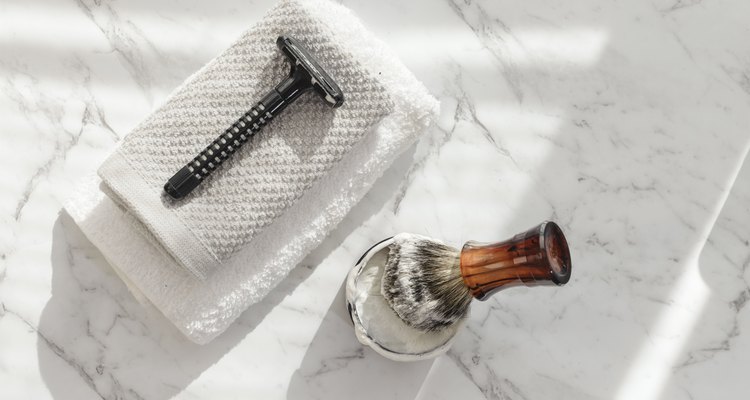
Adrian Seliga / EyeEm/EyeEm/GettyImages
Nothing destroys the effectiveness of a razor like the gunk and cream hidden between the blades. As the price of razors escalates, extending the life of your existing blade saves money. Spending a little time tending to the blade after you shave not only rids it of leftover soaps and creams and destroys lingering bacteria but results in a smoother and swifter shave when you use it next.
Whether it is on the face, on the legs or under your arms, the bleeding, telltale sign of a bad shave is in the past when sanitizing razor blades becomes part of your morning routine.
How to Clean a Razor
In addition to leftover soap scum attached to your used razor blade, bacteria accumulates. If it is not destroyed, the bacteria can cause an infection in any open wound.
The easiest way to begin your prevention program is to cleanse the razor by running it under very hot water. An old toothbrush is helpful for getting under the individual blades and loosening debris. Once you have cleaned the razor thoroughly, prop it up in a cup and let it air dry. You can damage the blade by wiping it with a towel.
Sanitizing Razor Blades
A barber shop features tall jars of a blue solution known as Barbicide. This disinfectant has been used for over 70 years to disinfect grooming tools, including shavers and razors. After each customer has been shaved, the razor is placed into the Barbicide for sanitization. This effective product is available for home use, and you can make your own Barbicide solution by mixing the concentrate in a ratio of 1:16.
Other Home Solutions for Disinfecting a Razor
Before shaving, run the razor blade under warm water to wash away any leftover hair or gel and to lubricate the razor. After shaving, a simple dunk in alcohol or hydrogen peroxide works to disinfect the razor. Keep the instrument submerged for at least 10 seconds (with one minute being the optimum length of time) and then air dry in the upward position.
Using Extra Precaution
After shaving, a dash of a witch-hazel-based aftershave soothes the skin and cleanses any unseen but open wounds. Another splash of the aftershave on the razor further cleanses it after your cleaning routine. Don’t forget to let the razor air dry in an upward position.
Note that you cannot disinfect your skin because it is porous. Only a solid surface benefits from disinfectants.
Warnings for Razor Use
Never share a razor. Even with the most attentive care, a razor can harbor bacteria that may infect an open wound. Sharing that bacteria is unhealthy and may cause a staph infection.
Do not store your razor in a travel kit unless it is fully dry and covered. Moisture encourages bacteria and rust. Replace the blade after six to eight shaves unless it starts to deteriorate with less frequent use. Judge the sharpness and decide when it is time to change the blade.
Related Articles

How Do I Sharpen the Blades of a ...

How to Clean an Old Safety Razor
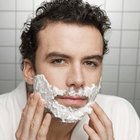
Schick Quattro Instructions

How to Lubricate a Norelco Razor

How to Open & Clean a Norelco 1050CC ...

How to Troubleshoot a Gillette® Fusion™ ...

How to Use the Norelco Jet Clean System
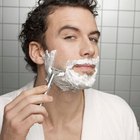
How to Sterilize a Double Edged Safety ...

How to Clean a Philips Norelco Shaver

How to Shave Leg Stubble

How to Clean & Sterilize Hair Clippers

Proper Sanitizing of Electric Razors

How to Replace a Braun 7505 Battery

How to Get Rid of a Musty Smell in an ...

How to Get a Closer Electric Shave

How to Remove the Blade on a Schick ...

How to Open a Remington Razor
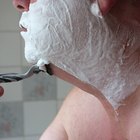
Shaving Soap Recipe With No Lye
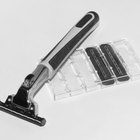
How to Sharpen Gillette Razor Blades

How to Repair a Norelco Razor
References
Writer Bio
Jann Seal is published in magazines throughout the country and is noted for her design and decor articles and celebrity *in-home* interviews. An English degree from the University of Maryland and extensive travels and relocations to other countries have added to her decorating insight.